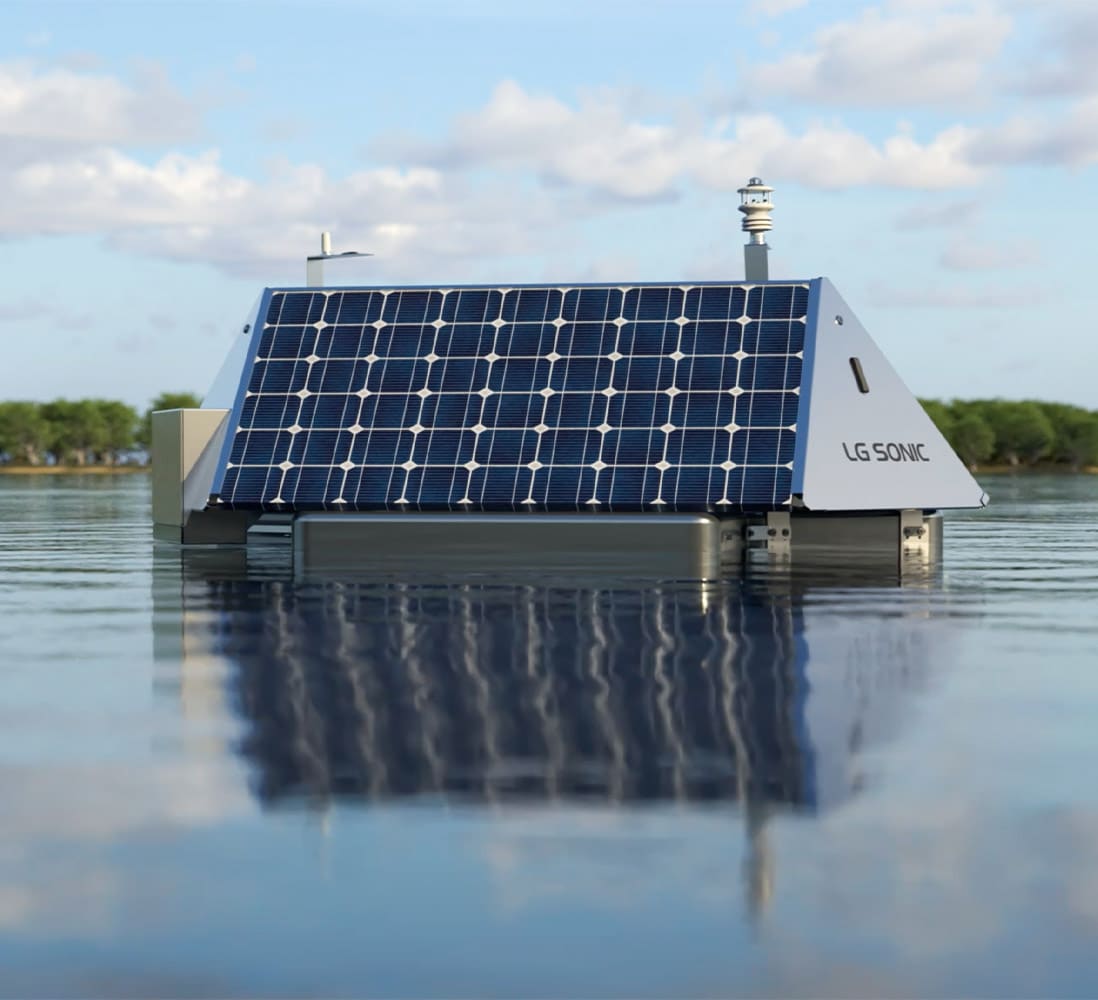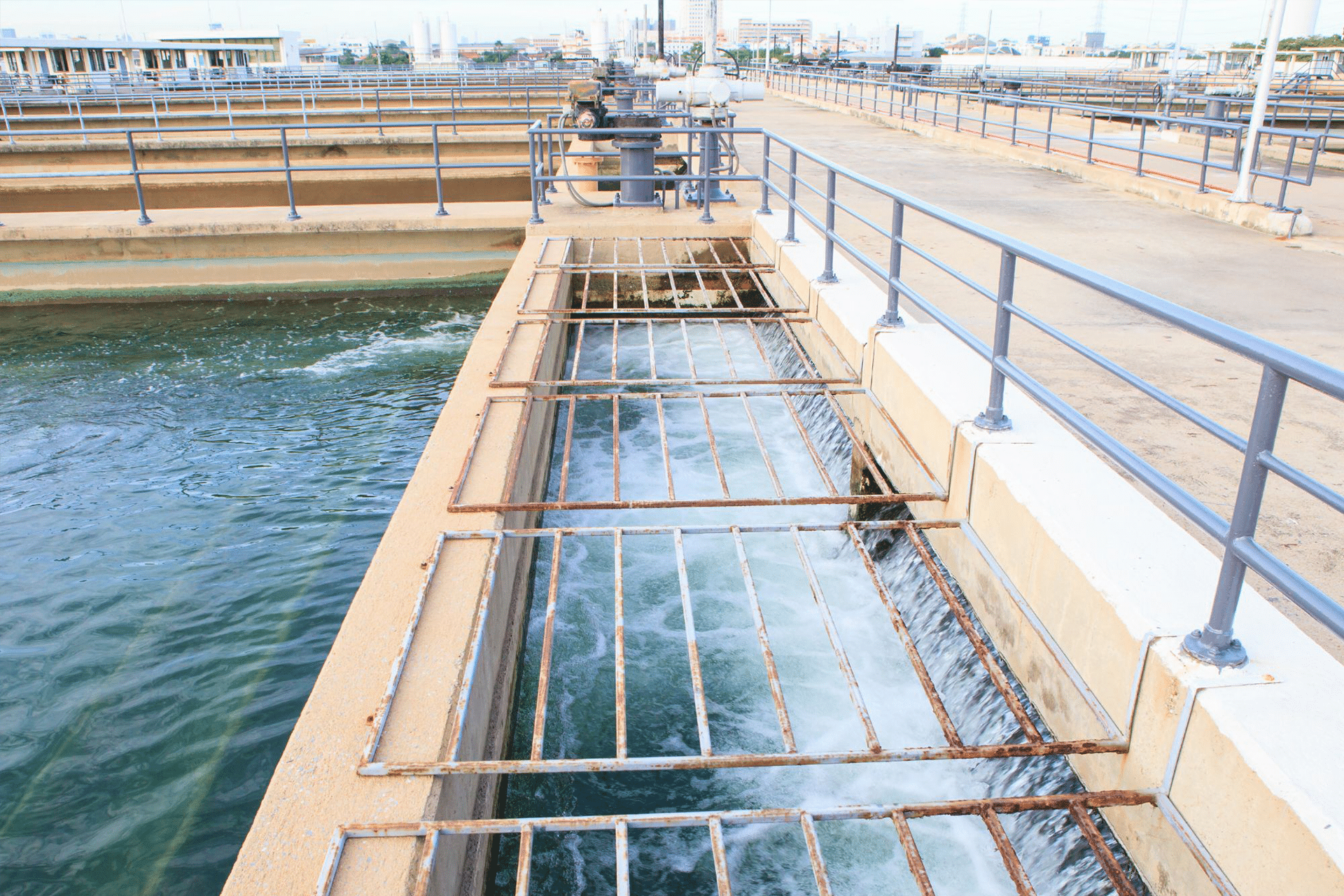Algae are a component of aquatic ecosystems. As photosynthetic primary producers, they support food chains, rising and falling within water columns in a diurnal migration pattern. However, with anthropogenic inputs of nutrients to our water bodies, algae at many thousands of sites globally, are growing excessively and causing harmful algal blooms. Left unchecked, or regarded as a natural phenomenon, blooms become ever more persistent, with increased intensity and duration. Many current treatment methods are inefficient, or in the case of chemical dosing, exacerbate the problem.
For water utilities managing reservoirs, the effects are myriad. Many reservoirs are in scenic locations where algae disturb the scene with the production of unsightly water, scums, ‘paint-like’ slicks and unpleasant smells. But some algae also release toxins, threatening human and animal health.
Beneath the water, damaging cascade effects take place as the algae dominate the aquatic realm, leading to dissolved oxygen crashes and sediments releasing more nutrients, chemicals and odours that accelerate blooms. As Utilities dredge sediment, local intense blooms can form, fuelled by legacy nutrients locked up in sediment.
In the abstracted water, entering water treatments works, this sub-optimum water must be treated, causing an excess of energy, chemicals and cost to be used for ever-more limited output volumes of potable water.
However, LG Sonic supports water utilities with a system of surface water management, the core of which utilises our solar powered, chemical free ultrasound to keep algae to levels consistent with un-enriched nutrient water. In doing so, water utilities are able to buy time to address nutrient inputs, target and optimise treatment.
Further, by managing catchments, managing algae and optimising abstraction, Utilities can protect and enhance the environment, allowing for mechanisms to protect against pollution and extreme weather. Since algae release greenhouse gases, of which methane is a major component, utilities also need to respond to climate change concerns and address the demand for net zero. In doing so, utilities are striving to minimize their carbon footprint and environmental impact.

Optimising WTW Processes
Treating algae in a raw water reservoir can have a whole host of benefits throughout the drinking water treatment chain, and is the World Health Organisation (2022) recommended method of eliminating algae from treatment chains. Examining OPEX savings from these benefits can be an excellent way of determining the overall success of the unit.
LG Sonic provides water quality data to Utilities in various ways; from sensors integral to the MPC buoys, from remote sensing, but also from entire catchments, incorporating user assets already deployed and processing scenarios using our Digital Twin. These upstream measurements are the first step to optimising a works as they allow a comprehensive watershed picture.

This enables Utilities to abstract their highest quality water by providing guidance on optimal locations, depths, and timing for abstraction, while also alerting users to any upstream issues in the catchment area. With this data, water abstraction can adjust dynamically, optimizing volumes based on catchment stress and water quality, ensuring the works draw the best water at optimal times and reduce abstraction during less favourable periods.
This allows for optimisation of the water treatment works with LG Sonic regularly meeting Return on Investment of less than a year as chemicals, processes and assets can be reduced or mothballed.
Opportunities for Treatment Chain OPEX Savings
Implementing LG Sonic’s equipment offers water utilities a pathway to achieving OPEX savings in their processes. These savings can result from improved water quality, reduced maintenance requirements, increased operational efficiency, and enhanced customer satisfaction.

Abstraction/ pumping costs:
- Visibly improved water quality leading to fewer instances of ‘algal bloom’ warning signs and reduced complaints from water users.
-
Reduced blocking of abstraction foot valves, reduced pipe friction and improved pumping efficiency, leading to reduced pump maintenance.
-
Reduction in manganese concentration entering the plant
-
Mothballing inefficient, energy hungry processes such as mixers, surface aerators and air curtains. Many of these mechanisms are not only inadequate for large scale deployment in reservoirs, but do not control algae and with moving parts and buoyancy reducing effects, can be a theat to water users straying too close to their intake areas
-
LG Sonic bathymetric analysis using Remote Sensing allows Utilities to identify areas to dredge
Coagulation, flocculation and clarification:
-
Increased inlet and outlet process stability
-
Reduction in precipitant volume
-
Reduced maintenance
-
Decreased sludge production and run to waste from clarifiers
Rapid gravity filters:
-
Reduced filter blinding
-
Increased filter run time
-
Reduction in backwash frequency
-
Lower volume to wash filters and run to waste
-
Greater availability of filters with fewer units in backwash queue
-
Increase in clearwater production
-
Greater head room between final water produced and water used to wash filters
Disinfection:
-
Higher UVT and lower potential for particle shielding in UV applications.
-
Lower chlorine demand from reduced organics, therefore lower dose of chlorine required to disinfect final water
-
Greater volume of potable water produced
-
WTW operating closer to max output.
-
Lower cost per unit of water produced.
-
Higher water quality, lower organics in final water
-
Lower levels of disinfection byproducts, THMS, in distribution
Customer experience:
-
Reduced levels of taste and odour complaints from customers as a result of reduced toxins such as geosmin, MIB, microcystins, chlorine by-products.
Optimizing water treatment works processes with LG Sonic offers water utilities a multifaceted approach to achieving cost savings and enhancing operational efficiency. By effectively managing algae, improving water quality, and streamlining treatment processes, Utilities can realize significant OPEX savings, reduce maintenance requirements, and enhance customer satisfaction. With LG Sonic’s comprehensive solutions and advanced technologies, Utilities are empowered to address environmental challenges, protect water resources, and adapt to evolving regulatory and climate change concerns, ultimately contributing to a sustainable and resilient water infrastructure.
